Douglas Marowa, from
the different institute of the India. wrote a research article
about, Empowering Women in Agriculture for Household Food Security.
entitled, The role of women in agriculture: Implications in providing,
improving household food security, for reducing hunger and malnutrition in
rural communities. This research paper published by the International
Journal of Agronomy and Agricultural Research | IJAAR. an open
access scholarly research journal on Agronomy, under the affiliation of
the International Network For Natural Sciences | INNSpub. an
open access multidisciplinary research journal publisher.
Abstract
There has been less
recognition to women contribute to agricultural and food security. Women’s work
in the agriculture and food security often remains invisible. The research
sought to investigate the role of women agriculture in providing household food
security and reducing of hunger and malnutrition in rural communities. The
research used a survey research design, quantitative and qualitative data was
gathered. Findings were that social and economic constraints place barriers
around women’s access to agricultural land and empowerment. Women had a high
positive attitude to the variables on; interest in contributing to household,
understanding of food security and socio-economic development. Men own land and
livestock at household level, livestock for women were realized through payment
of the bride prize. The country was not food secured, 68% of the household
could not afford three meals per day, malnutrition remains at 9% and the four
dimension of food security were averaging 23.25%. Given equal treatment, women
could produce high crop yield and can play role in food processing, in
nutrition, gardening and agricultural cooperatives. Farming and agricultural
policies need to address factors that were affecting the potential of women in
improving food security. This would help in fully utilization of the roles of
women in providing and improving household food security and reduce hunger and
malnutrition in the rural communities. Noted implications of not involving and
empowering women in agriculture was food insecurity in the rural communities as
food availability, accessibility, utilisation and stability was to achieved
year around in the communities.
Read more : Marketing Abaca Fiber:Insights from Caraga Region Farmers | InformativeBD
Introduction
There has been less
recognition to women contribute to farming and agricultural programmes, especially
food production as man has been generally recognized. Ibnouf (2009) indicated
that the reality in most Sub- Sahara African countries is that more than 50
percent of the active female population works in agriculture. Women’s work in
the agricultural sector often remains invisible because the products of their
labour are for the largest part intended for household consumption and do not
reach the market economy. According to FAO (1996), around 75% of plant genetic
diversity has been lost since the beginning of the century as farmers around
the world have forsaken their own multiple local varieties in favour of
high-yield, genetically uniform varieties. Gracia (2013) also indicated that
farming and agriculture helps to maintain biodiversity, yet is also one of the
primary activities, which may lead to its loss. Many modern agricultural
practices aimed at high crop yields are endangering the biodiversity in our
crops, due mainly to single-crop systems, which do not allow for rotation, the
use of improved varieties or hybrids to the detriment of traditional ones and
the overuse of pesticides, herbicides, fungicides and insecticides. However, it
is important to note that women are good natural resource manager, as the real
of natural biodiversity in the form of firewood, fruits and food, medicinal and
social cultural site.
Ibnouf (2009) revealed that normally, for anyone, food security depends not only on availability of sufficient food supply, but also on sustainability of permanent access to food. Achieving food security refers to access by all people to safe and nutritious food in adequate quantities to meets their dietary needs and leads an active life. However, this in itself does not confer adequate nutrition. A person's nutritional status involves accessibility to resources for food and translating the food obtained into satisfactory nutritional levels. Therefore, food security is a situation in which both food supply and effective demand are sufficient to cover nutritional requirements (Mittal, 2006). According to Ziblim (2014), the debate on the role of women in societies and their participation in economic activity has sparked a lot of controversy for a considerable time. Different groups of people such as women groups, government, development partners, and civil society groups have forwarded many arguments to support their stand on access by all people at all times to adequate food of good quality for active and healthy life. Food security can be explained as an access by all people at all times to adequate food of good quality for active and healthy life (World Bank, 1986). However, not all people have access to adequate food at all times for active and healthy life. Hunger and food insecurity are widespread in most developing countries including Zimbabwe. The 1996 World Food Summit (FAO 1996) which states that food security is met when all people, at all times, have physical and economic access to sufficient, safe, and nutritious food to meet their dietary needs and food preferences for an active and healthy life. This definition puts the notion of access to food centre stage. Ziblim (2014) suggested that gender differentials in the farm household also play a significant role in the economic performance of a given household. A great deal of empirical research has convincingly demonstrated that gender is important in defining the economic role of rural people in Africa (Ziblim (2014). This in turn has resulted in a growing recognition that men and women often have very different rights and responsibilities with respect to resource use and decision making in the processes of agricultural programmes. Doss (2018) suggested that the development literature abounds with claims about the benefits of targeting agricultural investments at women, especially in sub-Saharan Africa. These claims take many forms, but in general it is argued that increasing women’s agricultural productivity is key to increasing overall agricultural productivity, empowering women and reducing poverty.
The problem sought to be addressed in this research was the fact that women contribute to farming and agricultural programmes, especially food production and processing at household level, but the contributions and the roles are yet to be generally recognized. The role of women’s work in the agricultural sector often remains invisible and not recorded, extend of contribution towards providing and improving household food security, remain unnoticed.
This research sought fill this knowledge gap on yet to be recognized performance of women on food security to household in rural. They contribution in household food security, kind of agricultural activities was assumed to have influence on sustaining rural people’s livelihood, the socio economic and cultural factors that affect women in farming and agriculture activities.
Reference
The role of women in
agriculture: Implications in providing, improving household food security, for
reducing hunger and malnutrition in rural communities
CARE. 2020. Gender
equality and women’s empowerment in the context of food security and
nutrition. http://www.fao.org/fileadmin/templates
/cfs/Docs1920/Gender/GEWE_Scoping_Paper-FINAL040ct.pdf
Doss Cheryl R. 2018.
Women and agricultural productivity: Reframing the Issues. Development Policy
Review 2018 36, pp35-50 wileyonlinelibrary.com/journal/dpr
Doss CR, Kovarik C,
Peterman A, Quisumbing A, Van den Bold M. 2015. Gender inequalities in
ownership and control of land in Africa: Myth and reality. Agricultural
Economics 46, 403-434. https://doi.org/10.1111/agec.12171
Doss CR. 2014. If
women hold up half the sky, how much of the world’s food do they produce? In A.
R. Quisumbing, R. Meinzen-Dick, T. L. Raney, A. Croppenstedt, J. A. Behrman,
& A. Peterman (Eds.), Gender in agriculture: Closing the knowledge gap (pp.
69–88). Dordrecht: Springer.
Europa World. 1994.
The Europa World Year Book 1994. The Europa World Year Book 1994 (Vol 2) 35th
Edition. 9781857430066. Europa Publications Limited. https://books.google.co.zw/books?id
=I6MNfReWiwwC
FAO. 1996. Rome
declaration and World Food Summit plan of action. Report of the World Food
Summit 13-17 November 1996, Food and Agriculture organization of the United
Nations Rome, Italy 1996
Ibnouf Fatma Osman. 2009.
The Role of Women in Providing and Improving Household Food Security in Sudan:
Implications for Reducing Hunger and Malnutrition. Journal of International
Women’s Studies 10(4), 144-167.
Jemimah Njuki, Sarah
Eissler, Hazel Malapit, Ruth Meinzen-Dick, Elizabeth Bryan, Agnes Quisumbing. 2021.
A review of evidence on gender equality, women’s empowerment and food system.
United Nations Food Systems Summit 2021. International Food Policy Research
Institute
María del Mar Hidalgo
Garcia. 2013. The role of women in food security. https://dialnet.unirioja.es ›
descarga › articulo 83-96
Mittal S. 2006.
Structural Shift in Demand for Food: Projections for 2020. Working Paper
No. 184, p 16. Indian Council for Research on International Economic
Relations (ICRIER), New Delhi. http://www.icrier.org/.
Palacios-Lopez A,
Christiaensen L, Kilic T. 2017. How much of the labor in African
agriculture is provided by women? Food Policy 75, 52-63.
Smriti Rao. 2011.
Work and Empowerment: Women and Agriculture in South India, The Journal of
Development Studies 47(2), 294-315, DOI: 10.1080/00220388.2010.506910 UNDP.
1995. Human Development Report 1995: Gender and Human Development. http://www.hdr.undp.org/en
/content/human-development-report-1995.
USAID. 2016. Women
in non-production roles in agriculture: A literature review of promising
practices. United States Agency for International Development’s Bureau for Food
Security and Feed the Future.
World Bank. 1986.
A World Bank Policy Study; Poverty and Hunger: Issues and Options for Food
Security in developing countries. The World Bank Washington, D.C., U.S.A
World Bank. 2020.
World Development Report 2020: Trading for Development in the Age of Global
Value Chains. Washington, DC: World Bank.https:// openknowledge.worldbank.org/handle/10986/32437.
Ziblim Shamsu-Deen. 2014.
The Contribution of Women to Household Food Security in the Kassena -Nankana
East District in the Upper East Region of Ghana. International Journal of
African and Asian Studies Vol. 4, 2014.






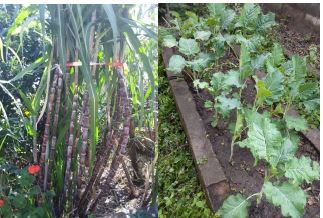
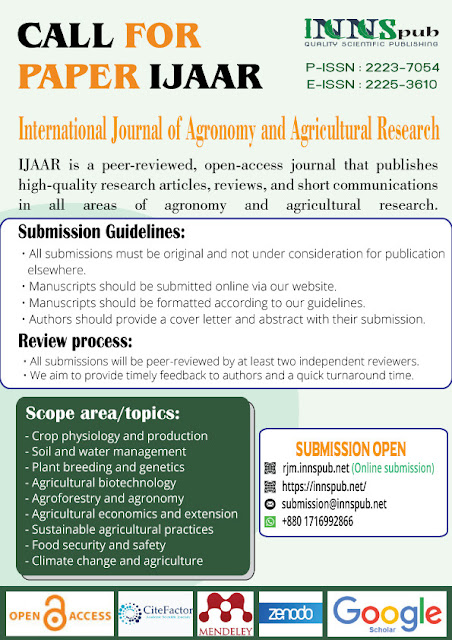
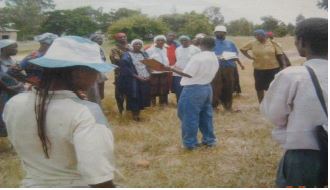
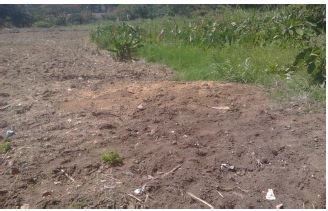
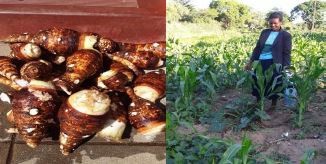



%20in%20full.JPG)


0 comments:
Post a Comment